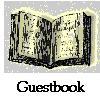







 |
 |
 |
 |
 |
 |
 |
 |
||
|
||||||||||||||||||
|
Games: |
||||||||||||||||||
|
In 1977, the late David A. Hargrave published The Arduin Grimoire, the coolest RPG book ever. Basically, it showed you how to run a high-energy D&D campaign. It's full of crunchy roleplaying goodness. For example: page 2: Experience Point System page 6: Condensed Character Limitation Chart pages 11-12: Notes on Fantastic Beings pages 14 - 18: Special Abilities Charts
pages 28 - 30: Magic in Arduin pages 39 - 42 New Spells page 60: Critical Hit Chart page 65 - 66: Dinosaurs pages 78 - 79: Most Malignant and Maleficent pages 80 - 84: New Monsters pages 87 - 90: The 21 Planes of Hell
Hargrave followed The Arduin Grimoire with Welcome to Skull Tower and The Runes of Doom, further books of the same kind (both in 1978). He also wrote four crazy, high-energy, extra-crunchy dungeons based on the Arduin material. Hargrave called The Runes of Doom the final volume, but he wound up writing several more Arduin books. The later ones have better production values but don't have high content density of the first three books. The Arduin system is usually unbalanced and often unbelievably complicated. For example, each weapon has 12 different damage ratings based on the Hit Dice of the target. (I guess this was supposed to be better than the damage rules in Greyhawk, which gave every D&D weapon two damage values, one for Man-size creatures [and smaller] and another for Larger-than-man-size creatures. Despite the vast amount of information, the trilogy doesn't really stand on its own as an independent game. Volume by volume, the work replaces most of the tables, rules, and systems in the D&D game (pre-AD&D), but it misses the basics. There's no section on elves as PC or goblins as monsters, for example, because that was all covered in the D&D books. There are variant rules for cure spells (curing a proportion of the subject's hit points in damage), but no rules for the cure spells themselves. The books were used almost exclusively as source material for D&D games. The books' production values aren't great, either. The pages are type-written sheets photo-reduced to fit on digest-sized pages. The editing leaves something to be desired. There aren't chapters, per se, just collections of pages on similar (or sometimes dissimilar) themes. Arduin's appeal isn't in its elegance, its comprehensiveness, its game balance, or its presentation. It's the author's enthusiasm that counts. Hargrave loved running his Arduin campaign, and the books read like the campaign notes of a manic DM. He often refers to his own campaign and how he makes rulings, runs combat, handles treasure, etc. Hargrave's enthusiasm is contagious. The good folks of Emperor's Choice have reprinted the Arduin trilogy, so this pieceof RPG history is available again. They've reprinted a later edition from 1981 or so. It has references to Dungeons & Dragons edited out, and it has better art than the original. (The bare-breasted woman on the back cover, however, got a leather bra for the second edition.) —JoT PS: In Welcome to Skull Tower, Hargrave recommends Alarums & Excursions. |
||||||||||||||||||